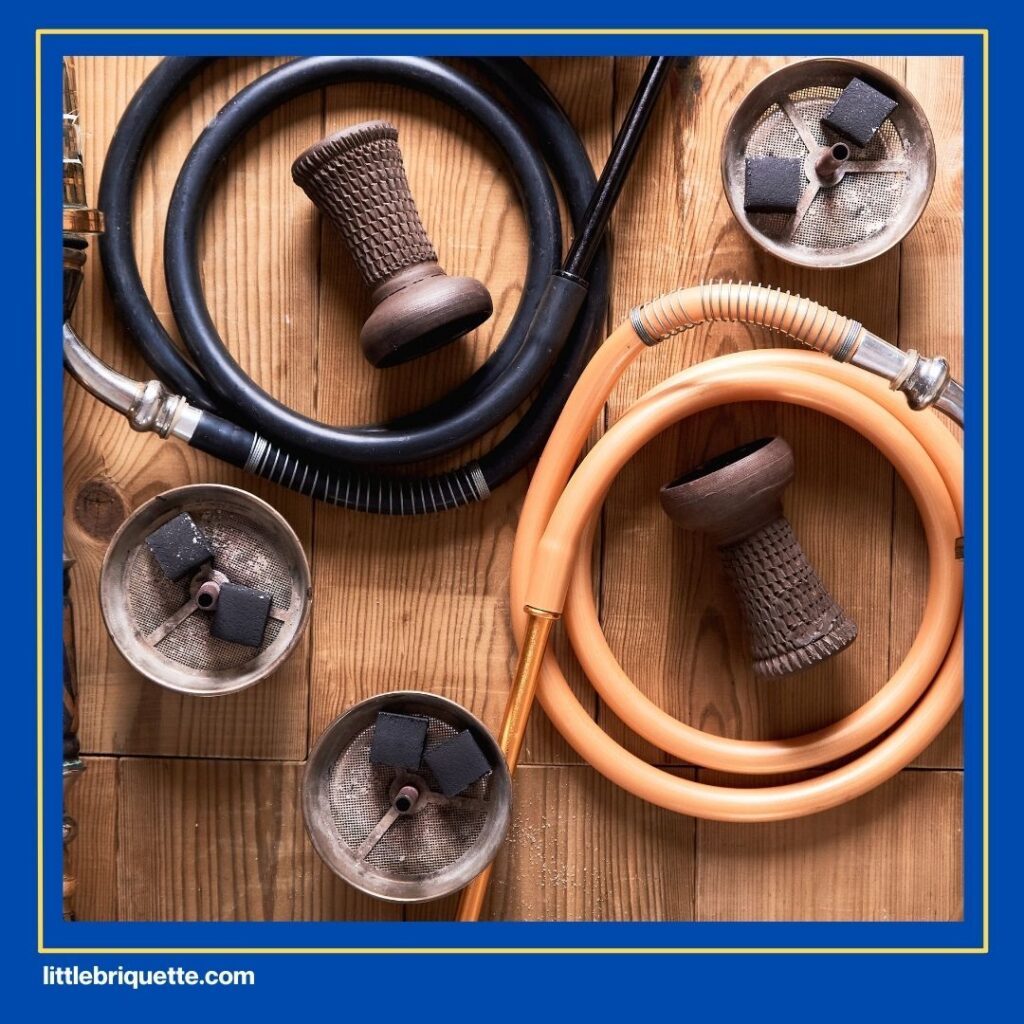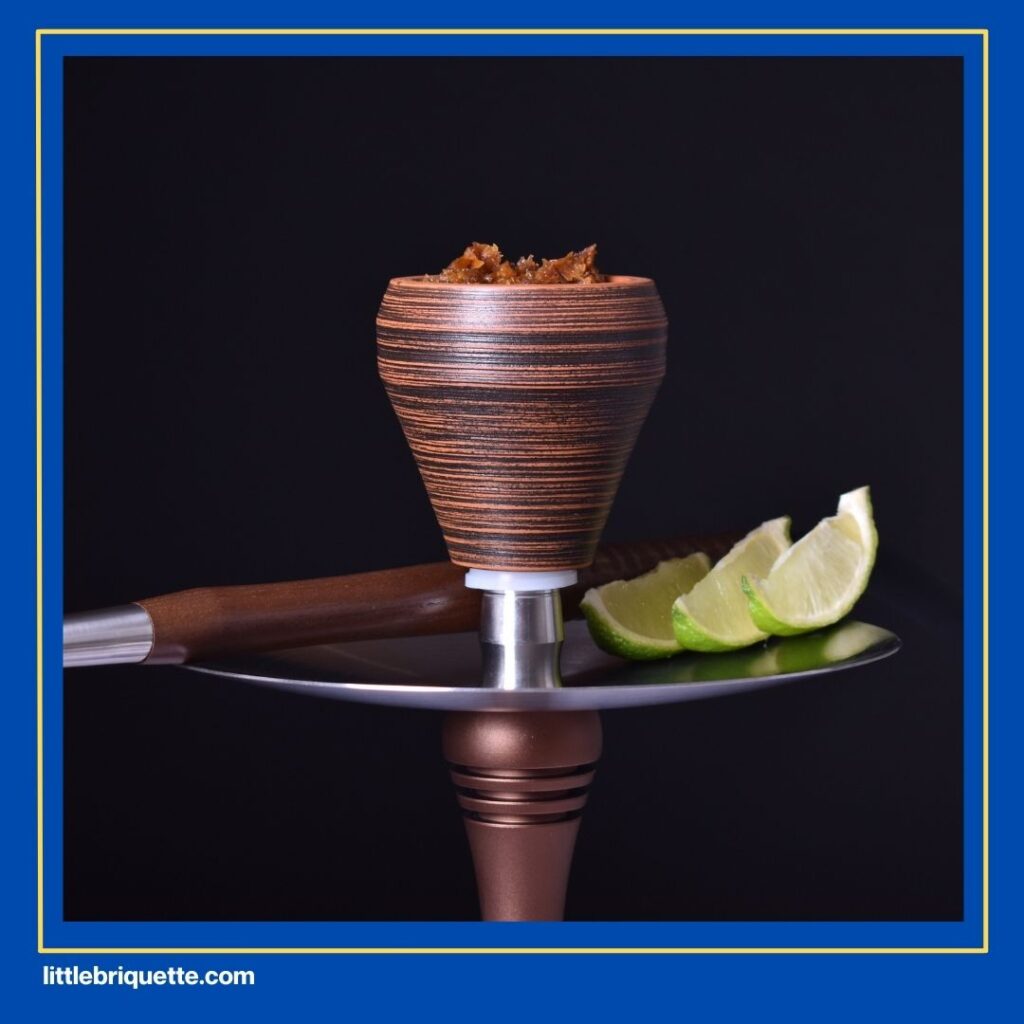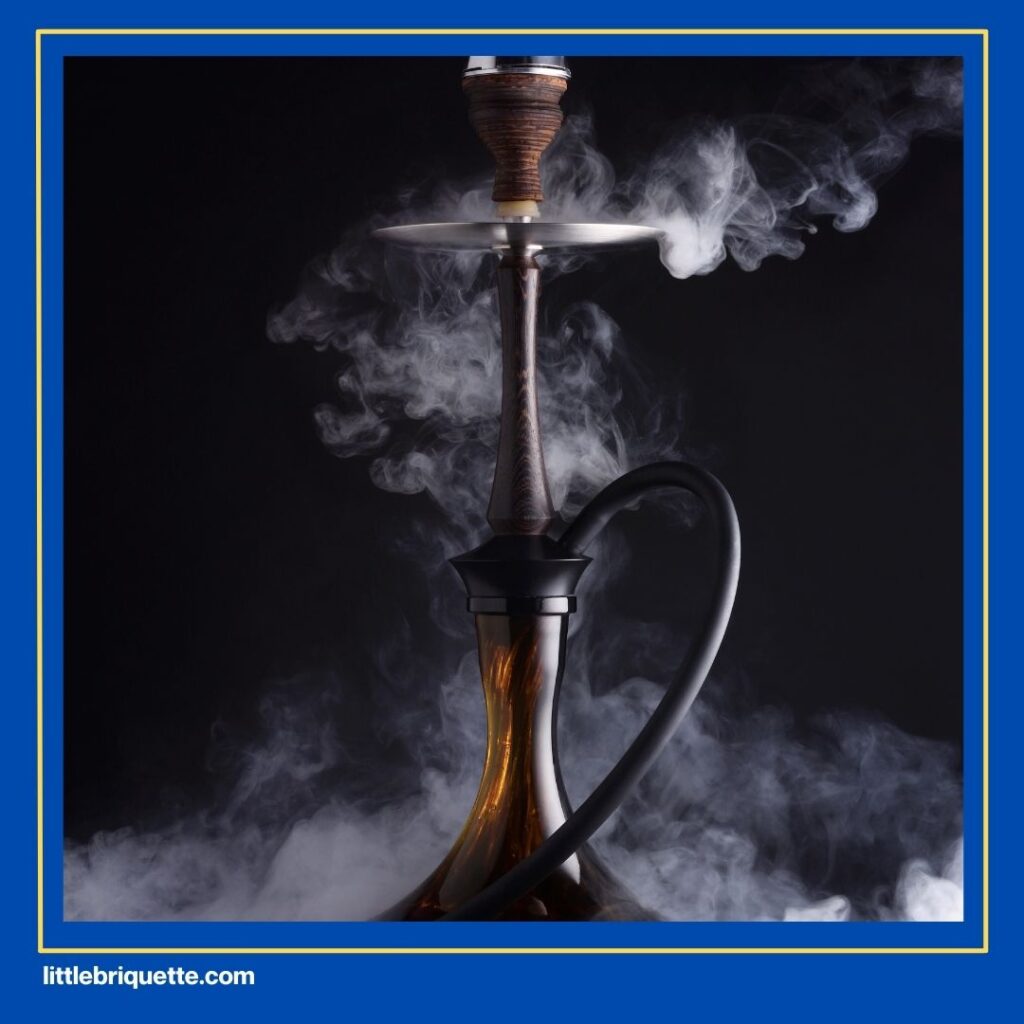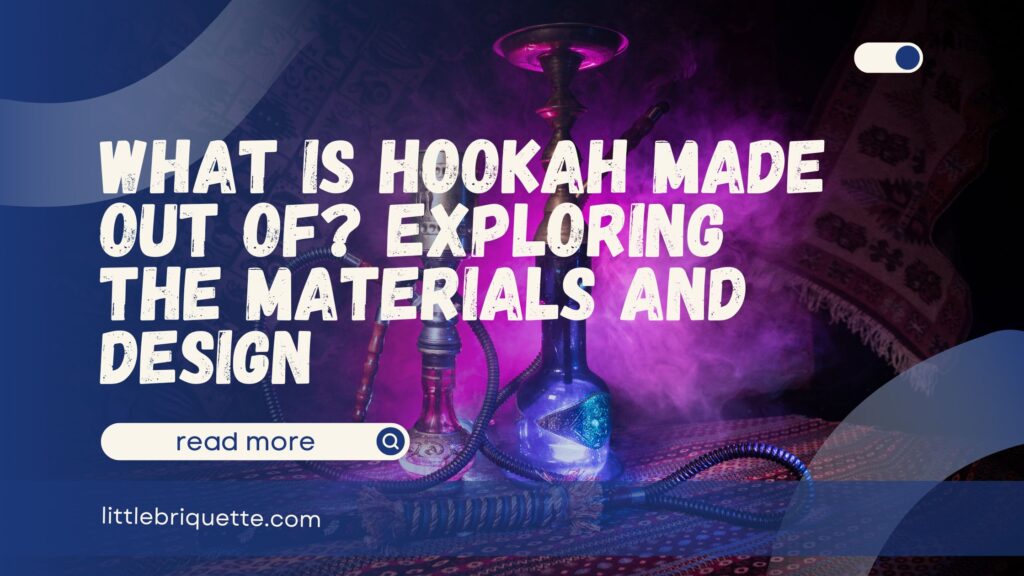Hookah, which is currently popular as the latest innovation in smoking, originated from the Middle East and South Asia. It has now spread across the world because it offers an engaging experience for its users. So, what is hookah made out of? Here is a complete explanation to understand the materials and design involved in a hookah.
What Is Hookah Made Out Of?
A hookah has several main components that are used to provide an engaging experience for users. Here are some of the key components of a hookah:
Stem – What Is Hookah Made Out Of?

The hookah stem, also known as the shaft, is the component that connects the bowl to the base. Common materials for the stem include stainless steel, brass, and aluminum. Stainless steel is a popular choice due to its resistance to rust and ease of maintenance, although it tends to be more expensive. Brass offers a classic appearance and durability but requires extra care to prevent oxidation. Aluminum is lightweight and more affordable but may be less durable compared to stainless steel or brass. Each material has its own advantages and disadvantages related to strength, durability, and cost.
Bowl

The hookah bowl is where the shisha or tobacco is placed and heated. Bowls are generally made of ceramic, glass, or metal. Ceramic is a very popular choice due to its ability to distribute heat evenly, but it can be fragile if not handled carefully. Glass bowls provide an attractive visual appeal and allow users to see the heating process, though they are more prone to breaking if not handled properly. Metal bowls, such as those made from aluminum or stainless steel, are highly durable and easy to clean but can affect the taste if not properly coated.
Hose

The hookah hose is the part used to inhale the smoke from the hookah. Common materials for hoses include silicone, leather, and nylon. Silicone hoses are highly flexible, resistant to high temperatures, and easy to clean, making them a hygienic and durable choice. Leather hoses provide a classic aesthetic touch and durability but require special care to maintain cleanliness and can be less flexible. Nylon hoses are a more economical and lightweight option, but they may not be as efficient as silicone in terms of flexibility and temperature resistance.
Base

The base of the hookah serves to hold the water used to cool and filter the smoke. Common materials for bases include glass, acrylic, and plastic. Glass bases offer an elegant appearance and allow users to clearly see the water and smoke, but they can be fragile if not handled carefully. Acrylic bases are more durable and lighter than glass but may not provide the same aesthetic appeal. Plastic is the most economical option but is less durable and can affect the taste and quality of the smoke if not well-designed.
Additional Hookah Equipment
Hookahs are often equipped with additional accessories such as a charcoal holder and a diffuser. The charcoal holder helps keep the charcoal in the right position and prevents it from coming into direct contact with the bowl, which is important for even heating and reducing the risk of fire. The diffuser, on the other hand, is a device attached to the bottom of the stem to smooth out the airflow by breaking up air bubbles, resulting in smoother and gentler smoke. Both of these additional accessories can enhance the smoking experience by affecting the quality and smoothness of the smoke produced.
Read Also: Exploring How Hookahs Works – From Tobacco to Smoke
Design and Functionality of Hookah
The design of a hookah plays a crucial role in influencing the airflow and the quality of the smoke produced. The structure of the stem, the shape of the bowl, and the configuration of the hose all affect how air and smoke move through the device. A well-designed hookah ensures smooth and optimal airflow, allowing the smoke to pass through the water in the base efficiently. An optimized airflow system will produce smoother and cooler smoke, enhancing the smoking experience. Additionally, features such as diffusers or silencers can break up air bubbles and reduce noise, contributing to a softer and more comfortable smoke quality.
The design differences between traditional and modern hookahs are quite significant. Traditional hookahs typically have a simpler design with metal stems often artistically decorated and bases made of glass or brass. In contrast, modern hookahs often incorporate new technology and ergonomic designs to improve functionality and aesthetics. For example, many modern hookahs use synthetic materials for parts like hoses and bowls, making them easier to clean and more durable. The latest technologies also include features such as advanced cooling systems and automatic charcoal controls, contributing to a more controlled and satisfying smoking experience.
Maintenance and Cleaning Tips
Maintaining and cleaning a hookah is crucial for ensuring a high-quality smoking experience. Proper cleanliness is essential to ensure an optimal and safe smoking experience. Accumulated dirt and residue can affect the taste of the tobacco and reduce the quality of the smoke. Additionally, poor hygiene can lead to the growth of bacteria and mold, which can pose health risks to users. Regularly cleaning each component of the hookah not only keeps the smoke quality optimal but also extends the lifespan of the device. Consistent cleanliness also prevents technical issues such as blockages or damage, ensuring the hookah functions well every time it is used.
Here are some tips for cleaning each component of the hookah:
- Stem: Clean after each use with a special brush and warm water, and use a mixture of water and vinegar if needed to remove residue and odors. Ensure it is completely dry before reassembling.
- Bowl: Clean after each use with a rinse of warm water and a soft brush, and perform a deep clean using a solution of vinegar and baking soda.
- Hose: Silicone or nylon hoses should be washed with warm soapy water and rinsed thoroughly, while leather hoses should be cleaned with a damp cloth and mild cleaner. Ensure all hoses are completely dry before reuse.
- Base: Glass or acrylic bases should be cleaned with warm water and mild soap using a soft brush. Additional equipment like the charcoal holder and diffuser should be soaked in warm soapy water, scrubbed, and rinsed clean.
Read Also: Exploring Flavors & Aromas of Hookah for Interesting Combinations
Coconut Charcoal for Hookah
To achieve an enjoyable hookah smoking experience, one of the essential components is coconut charcoal. Coconut charcoal is used to heat the hookah, which then produces smoke for the user to enjoy. Choosing high-quality coconut charcoal is also important for providing a pure taste and aroma for the hookah.
You can obtain high-quality coconut charcoal from Little Briquette. Little Briquette offers the best quality by using Sumatra coconut raw materials from their own plantation and through a careful production process. You can get it by contacting the admin number here.

